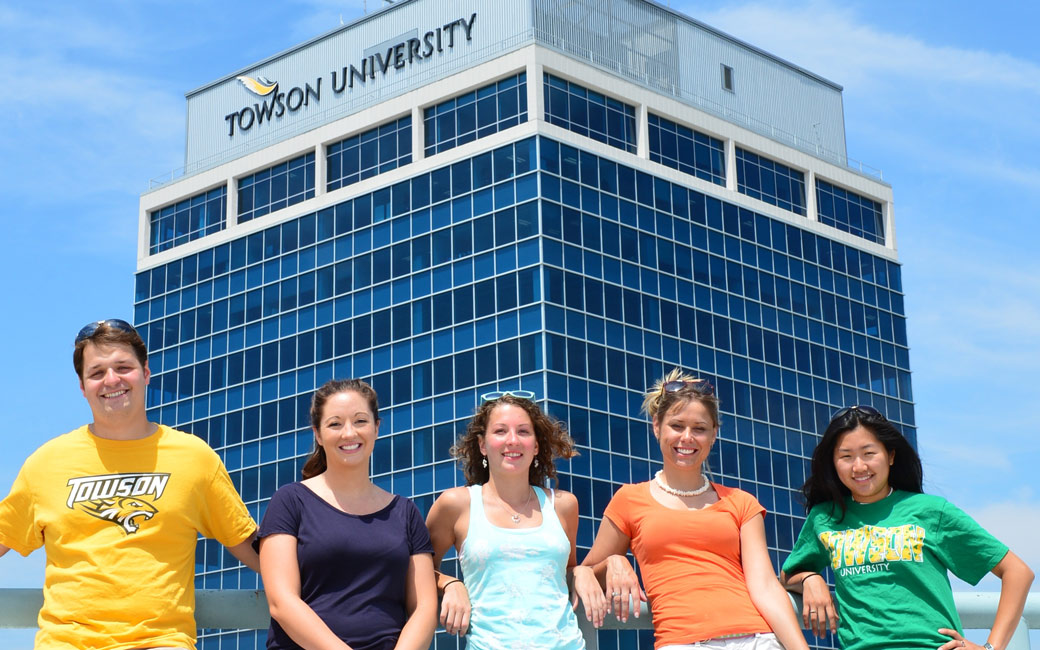Clinical Practicum
One of the most exciting parts of the Speech-Language Pathology Program is clinical practicum. Students begin in our state-of-the-art Speech & Hearing Center in the Institute for Well Being. After the first year, students then complete clinical rotations in some of the finest medical centers and schools in the region.

Practicum Requirements
Students need to complete 400 hours of clinical practicum to graduate and apply for certification from the American Speech-Language-Hearing Association (ASHA). Twenty-five of these hours are observation hours. Although ASHA allows students to complete observation hours concurrently with other practicum experiences, the SPPA department requires that all 25 hours be completed before practicum begins with clients. Students are allowed to complete up to 50 clinical hours at the undergraduate level in addition to the 25 observation hours. The remaining 325 hours must be completed at the graduate level. Although ASHA does not specifically require clinical practicum hours in Audiology, the department requires all speech-language pathology students to complete 12 hours of audiology (hearing screening, diagnosis, or rehabilitation).
On-Campus Practicum
During the first year of the program, students complete clinical practicum at the Speech and Language Center, located in the Institute for Well-Being. While some students have previous clinical experience at the undergraduate level, most students begin graduate clinical practicum with no experience. The department recognizes this and provides intensive supervision and support during the first year of practicum. Students are assigned multiple different clinical experiences each semester.
Clinical assignments include in-person treatment of individual pediatric and adult clients, teletherapy services, diagnostic teams, speech and hearing screenings, and group treatment programs. Group programs such as the Teeny Tigers program, the Children’s Therapeutic Program, and the Wellness in Stroke and Head Injury program are run collaboratively with Occupational Therapy. Students may also be assigned to group programs in the Hussman Center Adults with Autism. Our state-of-the-art facility has numerous speech language pathology treatment rooms for small to large groups, and two large Children’s Therapeutic Program rooms with an adjoining outside playground. Treatment and diagnostic simulations are also part of the clinical experience during the first year of graduate school.
The Institute for Well-Being functions as an interdisciplinary professional teaching center of excellence for a variety of majors within the College of Health Professions. This setting gives our students exposure to professional practice across multiple health care disciplines. The Institute for Well-Being is located within walking distance of the main campus. The Towson University shuttle bus makes regular runs between the two locations. For more information, visit the Institute for Well-Being.
Off-Campus Practicum
In the second year of the program, students complete clinical practicum off campus under the supervision of speech-language pathologists employed in the practicum setting. The clinic director surveys students to determine interests and attempts to coordinate opportunities for placements in clinical settings that match. Many placements are competitive, and those agencies interview several students for the placement. Students must complete a minimum of two off-campus placements before graduation. Students may complete placements in a variety of settings including public, non-public and private schools, nursing and rehabilitation settings, hospitals, private practices and outpatient facilities. Students who complete their pediatric placement in the schools may be eligible for teaching certification in Speech-Language Pathology after graduation. Some students may also complete a third off-campus practicum in the Summer between the first and second year of graduate school based on practicum availability and readiness to go off-campus. Recent off-campus placements include the following sites:
| School Settings where TU students have been placed | Hospitals where TU students have been placed |
|---|---|
| Anne Arundel County Public Schools | Alfred I. Dupont Hospital for Children |
| Baltimore City Public Schools | Anne Arundel Medical Center |
| Baltimore County Public Schools | Baltimore VA Medical Center |
| Carroll County Public Schools | Baltimore Washington Med Ctr |
| Forbush School at Shepherd Pratt | Forbush School at Shepherd Pratt Carroll Medical Center |
| Frederick County Development Center | Franklin Square Hospital (Medstar) |
| Frederick County Public Schools | Frederick Health Care Center |
| Harford County Public Schools | Frederick Memorial Hospital |
| Howard County Public Schools | Greater Baltimore Medical Center |
| Kennedy Krieger Institute School | Good Samaritan Hospital (Medstar) |
| Maryland School for the Blind | Harford Memorial Hospital |
| Maryland School for the Deaf | Hershey Medical Center |
| Montgomery County School System | Johns Hopkins Hospital |
| Odyssey School | Kennedy Krieger Institute Hospital |
| Prince George's County Public Schools | Kernan Hospital |
| Villa Maria School | Maryland General Hospital |
| Washington County Public Schools | Mount Washington Pediatric Hospital |
| Rehabilitation Centers | National Institutes of Health |
| Bel Air Nursing & Rehab | National Rehabilitation Hospital |
| Forest Hill Nursing & Rehab | Shady Grove Adventist Hospital |
| Future Care | Sinai Hospital |
| Genesis Rehab | St. Agnes Hospital |
| Kennedy Krieger Inst Center for Autism | St. Josephs Hospital |
| Manor Care Rehab Services | Union Memorial Hospital |
| Hearing and Speech Agencies | University of Maryland-Shock Trauma |
| Associated Speech & Language Services | University Specialty Hospital |
| Hearing & Speech Agency of Baltimore | Upper Chesapeake Med Ctr |
| National Speech & Language Center | VA Hospital |
| Scottish Rite Center | Walter Reed Army Medical Center |
| The Treatment & Learning Centers | Washington Adventist Hospital |
| Washington County Hospital |